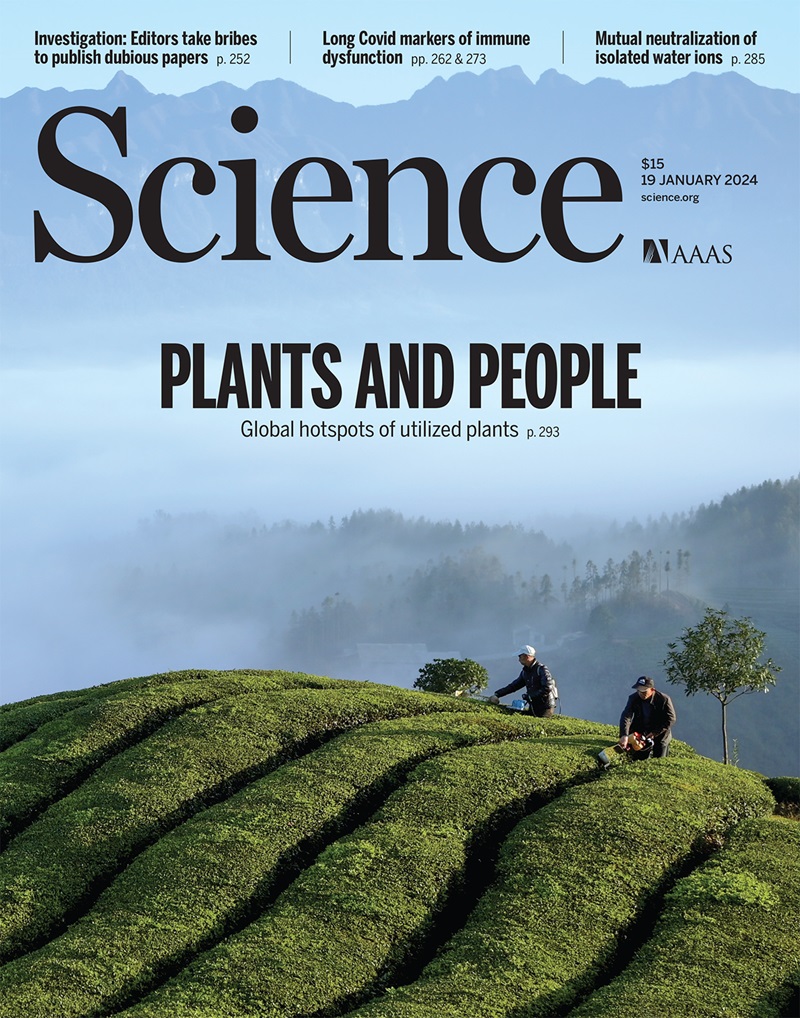Lithium extraction from brine through a decoupled and membrane-free electrochemical cell design
IF 44.7
1区 综合性期刊
Q1 MULTIDISCIPLINARY SCIENCES
引用次数: 0
Abstract
The sustainability of lithium-based energy storage or conversion systems, e.g., lithium-ion batteries, can be enhanced by establishing methods of efficient lithium extraction from harsh brines. In this work, we describe a decoupled membrane-free electrochemical cell that cycles lithium ions between iron-phosphate electrodes and features cathode (brine) and anode (fresh water) compartments that are isolated from each other yet electrochemically connected through a pair of silver/silver-halide redox electrodes. This design is compatible with harsh brines having magnesium/lithium molar ratios of up to 3258 and lithium concentrations down to 0.15 millimolar, enabling the production of battery-grade (>99.95% pure) lithium carbonate. Energy savings of up to ~21.5% were realized by efficiently harvesting the osmotic energy of the brines. A pilot-scale cell with an electrode surface area of 33.75 square meters was used to realize lithium extraction from Dead Sea brine with a recovery rate of 84.0%.
通过去耦合无膜电化学电池设计从卤水中提取锂
通过建立从苛刻盐水中高效提取锂的方法,可以提高锂基能源存储或转换系统(如锂离子电池)的可持续性。在这项研究中,我们介绍了一种无膜解耦电化学电池,该电池在磷酸铁电极之间循环锂离子,其阴极(盐水)和阳极(淡水)相互隔离,但通过一对银/卤化银氧化还原电极进行电化学连接。这种设计适用于镁/锂摩尔比高达 3258、锂浓度低至 0.15 毫摩尔的苛刻盐水,能够生产电池级(纯度 99.95%)碳酸锂。通过有效利用盐水的渗透能,可节省高达 21.5%的能源。电极表面积为 33.75 平方米的中试规模电池实现了从死海盐水中提取锂,回收率达 84.0%。
本文章由计算机程序翻译,如有差异,请以英文原文为准。
求助全文
约1分钟内获得全文
求助全文
来源期刊

Science
综合性期刊-综合性期刊
CiteScore
61.10
自引率
0.90%
发文量
0
审稿时长
2.1 months
期刊介绍:
Science is a leading outlet for scientific news, commentary, and cutting-edge research. Through its print and online incarnations, Science reaches an estimated worldwide readership of more than one million. Science’s authorship is global too, and its articles consistently rank among the world's most cited research.
Science serves as a forum for discussion of important issues related to the advancement of science by publishing material on which a consensus has been reached as well as including the presentation of minority or conflicting points of view. Accordingly, all articles published in Science—including editorials, news and comment, and book reviews—are signed and reflect the individual views of the authors and not official points of view adopted by AAAS or the institutions with which the authors are affiliated.
Science seeks to publish those papers that are most influential in their fields or across fields and that will significantly advance scientific understanding. Selected papers should present novel and broadly important data, syntheses, or concepts. They should merit recognition by the wider scientific community and general public provided by publication in Science, beyond that provided by specialty journals. Science welcomes submissions from all fields of science and from any source. The editors are committed to the prompt evaluation and publication of submitted papers while upholding high standards that support reproducibility of published research. Science is published weekly; selected papers are published online ahead of print.
 求助内容:
求助内容: 应助结果提醒方式:
应助结果提醒方式:


